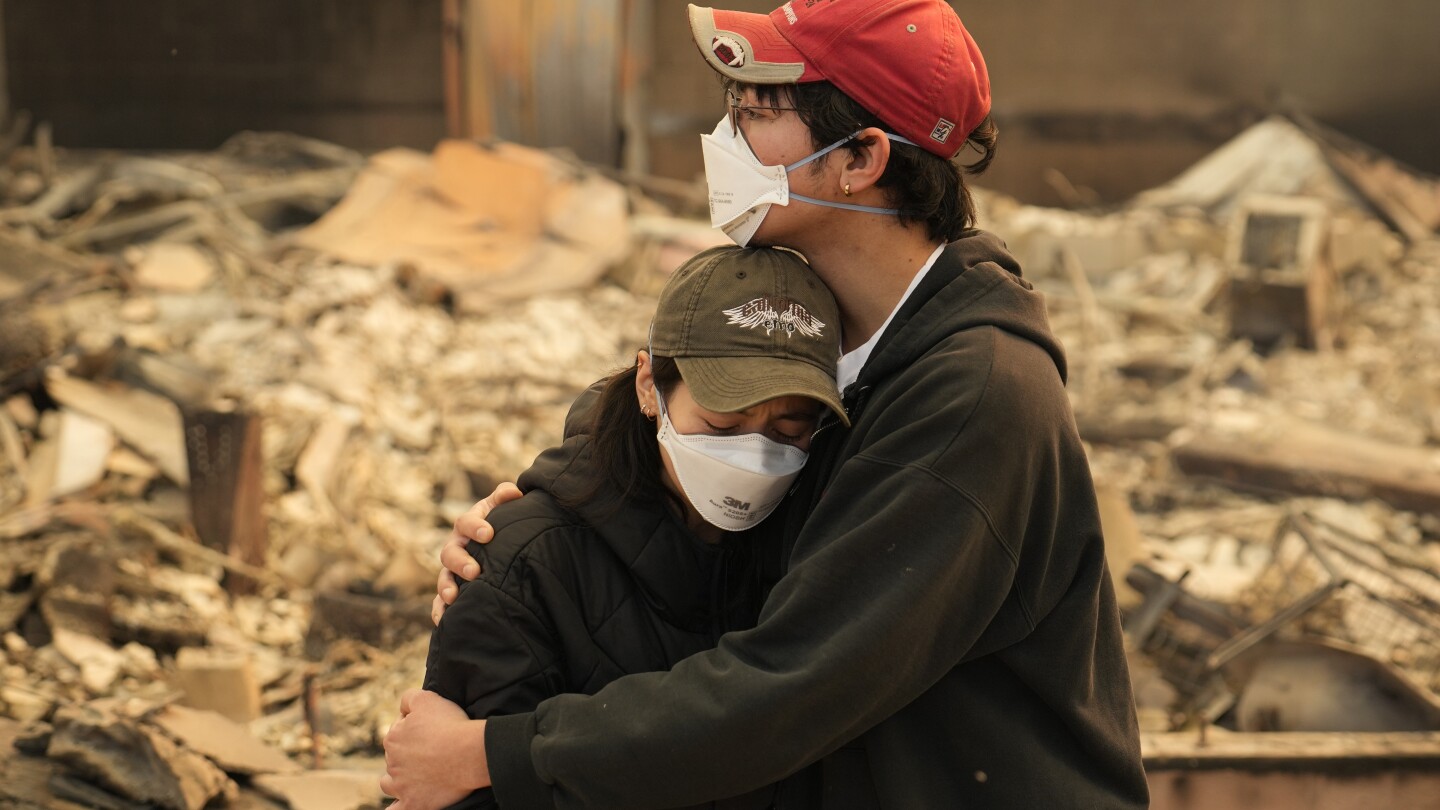Battling the Smoke: How Angelenos are Adapting to Air Pollution
As smoke from wildfires blankets Los Angeles, the city’s residents are facing a critical challenge: how to protect their health amidst worsening air pollution. With climate change exacerbating the frequency and intensity of wildfires, Angelenos are increasingly turning to various methods to combat the effects of smoke and air quality deterioration. This article explores the innovative strategies being implemented by Los Angeles residents, the ongoing struggle against pollution, and the broader implications for public health and the environment.
The Reality of Air Pollution in Los Angeles
Los Angeles has long been synonymous with smog and poor air quality, a legacy of its car culture and industrial activities. However, the recent surge in wildfires across California has introduced a new level of urgency to the air pollution crisis. Smoke from these fires contains harmful particulates and chemicals that can penetrate deep into the lungs, leading to respiratory issues, cardiovascular problems, and other health complications.
According to the California Air Resources Board, the air quality in Los Angeles often reaches unhealthy levels during wildfire season, prompting officials to issue advisories for residents, particularly those with pre-existing health conditions. The situation is further complicated by the fact that climate change is expected to increase both the frequency of wildfires and the intensity of heat waves, creating a vicious cycle of pollution and health risks.
Adapting to the Smoke: Air Filters and Masks
In response to these dire conditions, many Angelenos are taking proactive steps to safeguard their health. One of the most popular solutions has been the purchase of high-efficiency particulate air (HEPA) filters. These devices are designed to capture small particles from the air, including those found in wildfire smoke. Residents are installing HEPA filters in their homes, businesses, and even in their vehicles to create cleaner air environments.
- Home Air Purifiers: Many families have turned to home air purifiers equipped with HEPA filters, which can significantly reduce indoor air pollution. These devices are particularly effective in trapping fine particulate matter, ensuring that air quality remains as high as possible indoors.
- Respiratory Masks: Wearing masks has become a common practice among Angelenos. N95 respirators, which filter out 95% of airborne particles, are now a staple in many households, particularly during peak wildfire seasons.
Residents are not just focusing on personal health; there’s a growing community awareness about air quality and its impact on public health. Local organizations are conducting workshops to educate residents on the importance of air filtration and respiratory protection.
Community Initiatives and Resources
The response to air pollution in Los Angeles has also seen grassroots movements and community initiatives take shape. Local non-profits and health organizations are working tirelessly to provide resources and support to vulnerable populations, such as the elderly and those with chronic health conditions.
- Air Quality Monitoring: Several community groups have launched air quality monitoring programs, providing real-time data on pollution levels. This information empowers residents to make informed decisions about when to stay indoors and when it might be safe to venture out.
- Health Workshops: Organizations are offering workshops focusing on how to cope with air pollution, including tips on staying indoors during high pollution days, the importance of hydration, and recognizing symptoms related to smoke exposure.
These community efforts are crucial, especially in neighborhoods disproportionately affected by pollution. By banding together, residents are not only protecting themselves but are also fostering a sense of solidarity and resilience in the face of ongoing environmental challenges.
Urban Planning and Long-Term Solutions
While immediate responses to air pollution are essential, long-term solutions must also be addressed to create a healthier environment in Los Angeles. Urban planners and local government officials are considering various strategies to mitigate the effects of air pollution:
- Green Spaces: Increasing urban green spaces, such as parks and community gardens, can help improve air quality. Vegetation acts as a natural air purifier, absorbing pollutants and providing oxygen.
- Public Transportation: Expanding and promoting public transportation options can reduce the number of vehicles on the road, thereby decreasing emissions and improving air quality.
- Renewable Energy Initiatives: Transitioning to renewable energy sources, such as solar and wind power, can significantly reduce reliance on fossil fuels, a major contributor to air pollution.
These initiatives require collaboration between community members, government officials, and environmental organizations to ensure that Los Angeles can adapt to the realities of climate change and air pollution effectively.
The Role of Technology in Combating Air Pollution
In addition to traditional methods of coping with air quality issues, residents are leveraging technology to stay informed and proactive. Numerous mobile applications provide real-time air quality updates, allowing users to monitor pollution levels in their neighborhoods and plan their activities accordingly. Some popular apps include:
- AirNow: Provides daily air quality forecasts and alerts based on location.
- Plume Labs’ Air Report: Offers air quality tracking with health recommendations based on pollution levels.
- IQAir: Features hyper-local air quality data and forecasts, empowering users to protect their health.
By harnessing technology, Angelenos can make informed decisions about their daily lives, adapting to the challenges posed by air pollution more effectively.
Conclusion: A Community United Against Air Pollution
As Los Angeles continues to grapple with the effects of wildfires and air pollution, its residents are demonstrating resilience and adaptability. From investing in air purifiers and masks to participating in community initiatives and advocating for better urban planning, Angelenos are taking significant steps to protect their health and environment.
The fight against air pollution is not just an individual battle; it’s a collective effort that underscores the importance of community, technology, and sustainable practices. By working together, residents of Los Angeles are not only battling the smoke but also paving the way for a healthier, more sustainable future.
See more Your Daily Weather



